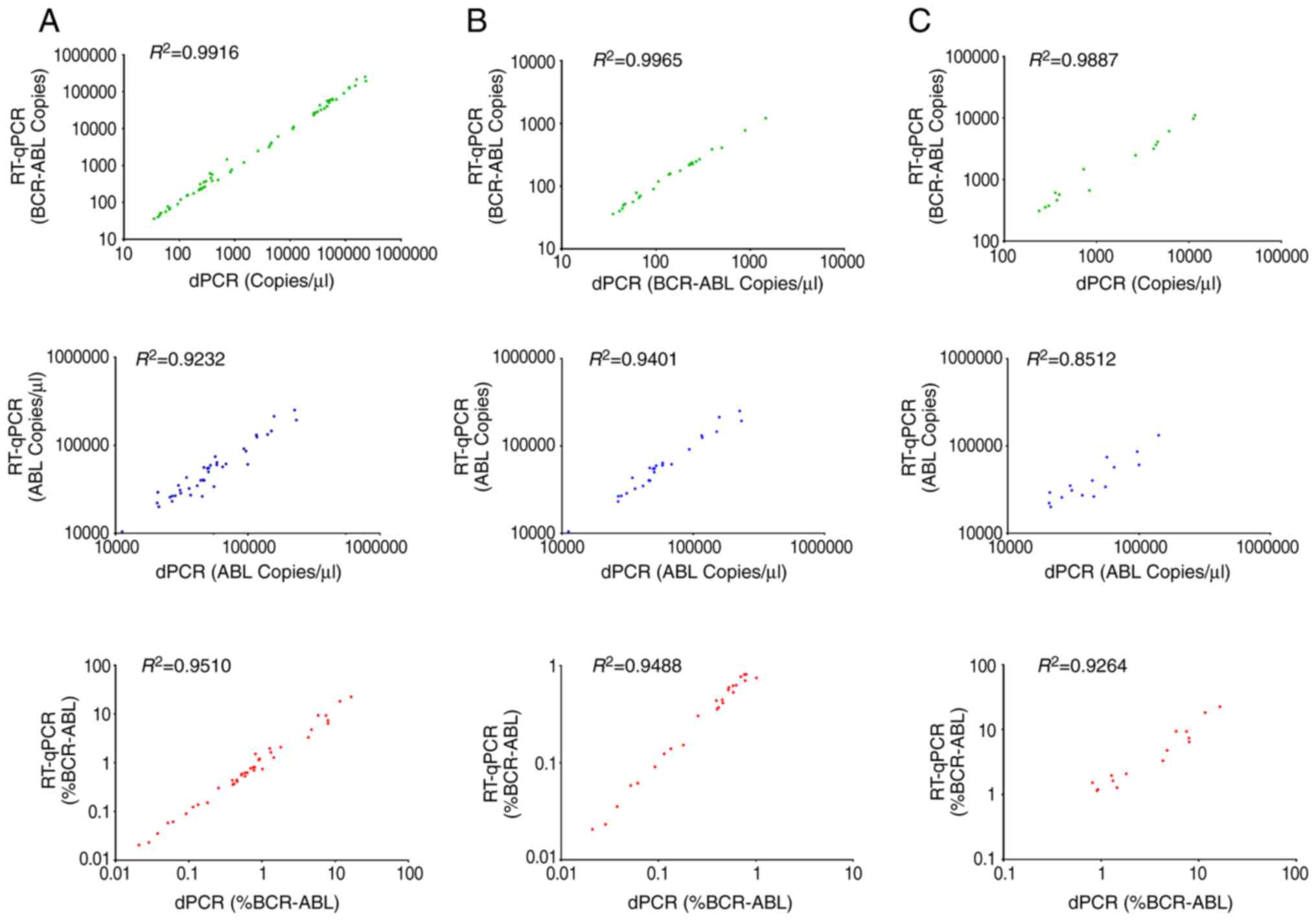Advantages of digital PCR in the detection of low abundance BCR‑ABL1 gene in patients with chronic myeloid leukemia
- Authors:
- Published online on: September 12, 2019 https://doi.org/10.3892/ol.2019.10861
- Pages: 5139-5144
-
Copyright: © Yan et al. This is an open access article distributed under the terms of Creative Commons Attribution License.
Metrics:
Total
Views: 0 (Spandidos Publications: | PMC Statistics:
)
Total PDF Downloads: 0 (Spandidos Publications: | PMC Statistics:
)
Abstract
Quantitative monitoring of BCR‑ABL1IS gene using reverse transcription quantitative‑PCR (RT‑qPCR) is an important method for evaluating the treatment effects in patients with chronic myeloid leukemia (CML). Digital‑PCR (dPCR) can be applied to detect the BCR‑ABL1 gene with high sensitivity. In the present study, the results of the ClarityTM dPCR system were compared with those of the RT‑qPCR in order to determine whether dPCR can be applied in the clinical setting. A total of 83 patients were included in the present study, and they were divided into two groups according to the results of BCR‑ABL1IS during ongoing monitoring. A total of 43 patients with undetectable BCR‑ABL1IS where enrolled in group A. BCR‑ABL1 testing was performed using the dPCR system on the same peripheral blood samples of patients from group A, and the association between dPCR results and relapse was analyzed. The RT‑qPCR platform and dPCR system were used simultaneously to detect the BCR‑ABL1 gene of another 40 patients who achieved either partial cytogenetic response (PCyR) or further response. Among patients with undetectable BCR‑ABL1IS, patients with dPCR‑positive disease (BCR‑ABL1 >0.1%) were more likely to undergo molecular relapse (P=0.018). The results of dPCR detection of BCR‑ABL1% were consistent with the RT‑qPCR results (R2=0.9510) in patients who achieved PCyR or further response. For samples with BCR‑ABL1IS <1.0%, the consistency of the dPCR and RT‑qPCR results was better than that of BCR‑ABL1IS >1.0% (R2=0.9488 vs. R2=0.9264 for BCR‑ABL1IS). The detection results of the BCR‑ABL1 gene in patients with CML using dPCR matched well with those from the RT‑qPCR. To conclude, the results of the dPCR system can be applied as a supplement to the RT‑qPCR platform, particularly for those with BCR‑ABL1IS <1.0%.













